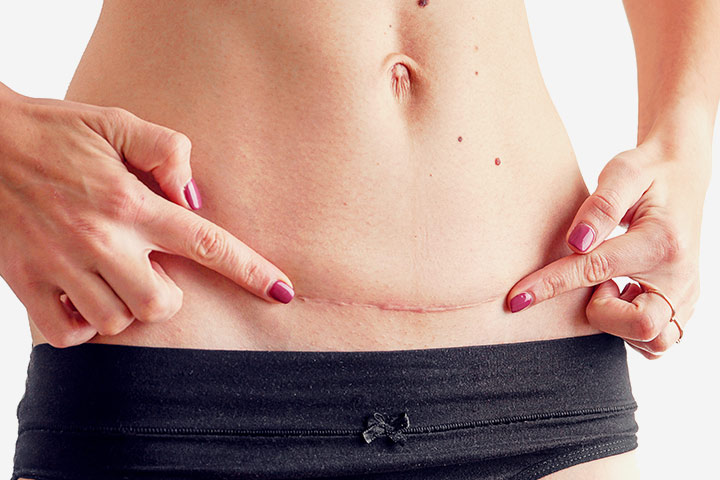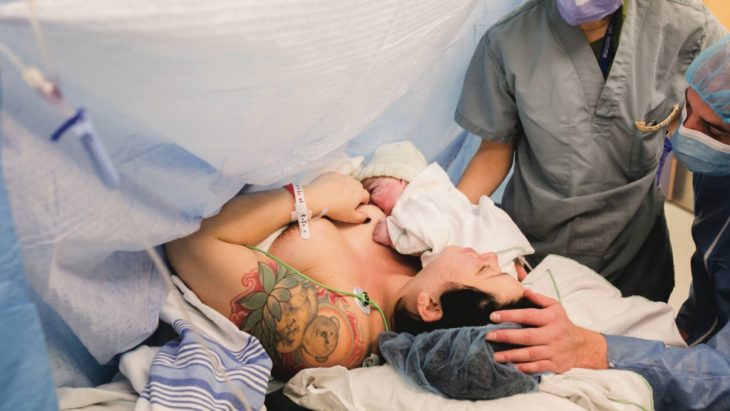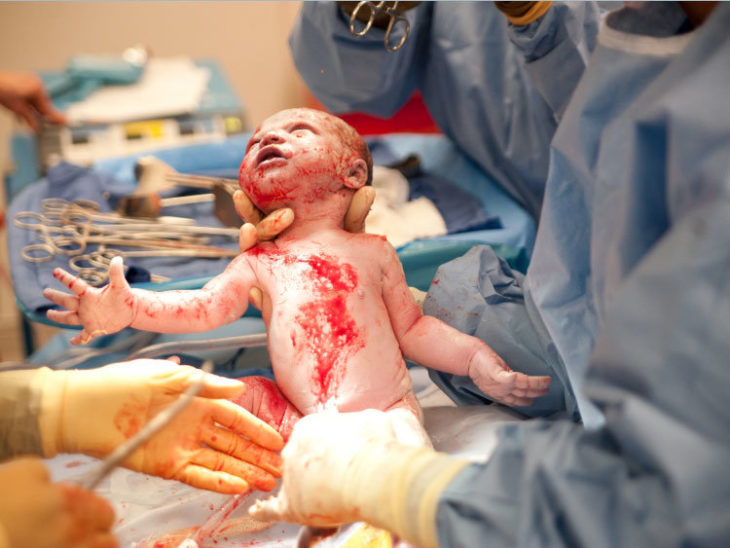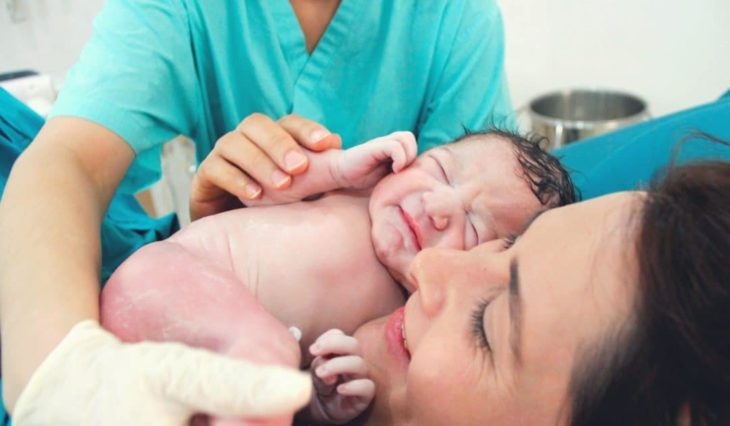Right before I signed the paper, I looked into my husband’s fearful eyes and felt a wave of disbelief at the realization that I was about to consent to the very thing that I had desperately wanted to avoid. During the previous six months of my pregnancy, I huffed through prenatal yoga sessions, dragged my big belly to childbirth classes, spent $500 on acupuncture treatments and even hired a birthing coach (known as a “doula”) to insure that my firstborn would make a serene entrance into the world. As my due date approached, my thoughts became preoccupied with images of the idealistic birthing experience that was about to change my life. I carefully selected songs for my “birthing playlist,” and envisioned the perfectly disheveled picture that I would post on Facebook to introduce my little guy to the world. With all the energy I put into personalizing the experience, it never occurred to me that I would end up feeling like a statistic—one of the 38 percent of new mothers at our New York City hospital who delivered her baby through Cesarean Section.

Source: Medium
The only word I can use to describe the pain is FIRE. It felt like the devil himself was trying to tear open my pelvis like a Thanksgiving dinner turkey carcass.
Like most women in their early 30s, my biggest concern prior to getting pregnant was that I would not be able to conceive. When, after two years of marriage, my husband and I started talking about having a baby, I ran right to the internet and started obsessively reading about my decreased chances of fertility, increased chances of miscarriage and every other depressing statistic related to baby-making. To my utter shock, I got pregnant right away. Then I realized that I had absolutely no idea what to do.
“Should I call a doctor?” I asked my mother, a few hours after seeing a little blue plus sign on the plastic stick. She laughed and said she’d help me find someone since I had moved to New York City from Boston, where my previous physician was located. A day or two later, she came up with a number for a woman who had taken over for the OB-GYN that she had used to deliver me. “It’s a shame he’s dead,” she said of her old doc. “But I spoke to three people who said that this new woman is fantastic.”
Armed with references, I headed to Dr. S.’s Upper East Side waiting room adorned with high-end, abstract canvases. I took a seat on one of the plush sofas, which were dotted with huge bellies attached to arms holding Louis Vuitton purses. Forty-five minutes later, a soft-spoken, Korean-American woman in a white lab coat escorted me into her office. She got really excited when I told her I was pregnant, took me into the exam room to confirm the pregnancy and announced my due date—January 7th. “You could have the first baby of 2010,” she squealed.

Source: Today’s Parent
The new few months were a blur of first-trimester ailments—fatigue, nausea, pimples, headaches. One night, when I had no energy for anything other than watching a movie, the little genius who lives inside Netflix suggested that I might enjoy a documentary called “The Business of Being Born.” It seemed appropriate—both because I was pregnant and I have a thing for left-leaning, anti-establishment documentaries—so I clicked the “watch instantly” button and settled into bed with my laptop. The film made an incredibly convincing case that giving birth in a hospital might actually be detrimental to the health of mother and baby. The statistics on Cesarean Section were the most staggering. Though the World Health Organization identifies the ideal C-Section rate as being between 5 and 10 percent, about one in three American women now deliver through surgery, which exposes them to serious complications like life-threatening infections and future infertility. I decided then and there that I would do whatever I could to have a “natural,” un-medicated birth.
Though I considered switching to a midwife, I was too far along in my pregnancy for most providers to take me on. I decided to stay with Dr. S. and her New York City hospital but to be proactive about getting the birthing experience that I now knew I wanted. I enrolled in an excellent childbirth class, did a ton of reading on the topic and had frequent conversations with Dr. S. about my childbirth preferences. My husband, Josh, and I even decided to hire a doula, or a birthing coach, to make sure that I didn’t receive unnecessary medical interventions. Because experienced doulas in New York City typically cost $3,000, we cheaped out and hired a student for $500. Still, I was confident that her inexperience would not be an issue because Josh and I were educated on the birthing process.

Source: www.self.com
I went into labor at midnight on December 30th. Josh and I did as we were instructed, which was to phone the doctor on call, who told us to come to the hospital when the contractions were five minutes apart. By 5 a.m., I was panting in the front seat of our borrowed Subaru headed up the West Side Highway. At this point, the pain was relatively manageable if I concentrated on the breathing techniques that I had practiced. Our doula met us at the door to the hospital and, pretty soon, I was strapped to a table with a contraction monitor around my enormous belly.
“Your contractions are slowing down a bit, which can happen when you transfer from home to the hospital,” my doctor informed me. She suggested that I take Pitocin, a drug designed to speed up labor. I had read that Pitocin may be associated with increased risks of Cesarean Section so I declined. They told me that I would either have to take the drug or go back home to labor, if my contractions didn’t pick up. Incredibly, I decided to make the 45-minute drive back to Brooklyn rather than start an unnecessary intervention.
By the time we got back to our apartment around noon, my husband, our doula and I were all exhausted. The contractions had slowed to 10 minutes apart so I napped between the flare-ups of pain. I managed to stay in bed for the next eight hours, going back and forth between snores and screams. Finally, I decided that I was ready to get the baby out. I got up, took an shower and felt the labor come on full force with contractions that were now about three minutes apart.
The only word I can use to describe the pain is FIRE. It felt like the devil himself was trying to tear open my pelvis like a Thanksgiving dinner turkey carcass.

Source: NPR
By the time we got back to the hospital around midnight, I had officially been in labor for 24 hours and was begging for the epidural, which I soon received from the on-call anesthesiologist. As I drifted off to sleep, an intern came in and began to insert an internal fetal heart rate monitor.
“I wrote that I don’t want that in my birth plan,” I said groggily and motioned to Josh to bring over the piece of paper. I had read that internal heart rate monitors were associated with increased risk of Cesarean Section because the hospitals are quick to mistake a natural fluctuation of the baby’s heart rate during birth for fetal stress.
“This will keep track of the baby’s heart rate,” she said, completely ignoring me. I didn’t have the strength to argue with her and fell asleep.
I started pushing around 6 a.m. on December 31st. Our doula was nowhere to be found (we later learned that she couldn’t get past the hospital security because she made the rookie mistake of telling them that she was “a friend”), but everything seemed to be going smoothly. Until the heart rate monitor went off.
“The baby’s heart rate is low. You need to get the baby out. Push down like you’re constipated,” Dr. S. said. I thought that I would instinctively know what to do when it came to pushing the baby out but I had no idea if I was doing it right. I gritted my teeth and prayed for it to be over.

Source: CNN.com
“Joie, his heart rate is not going up. We need to get the baby out now,” she said and shoved a consent form in my face. All of my planning went out the window and I instantly signed the paper. Not a minute later, I was surrounded by hospital staff and being wheeled into surgery. I started to hyperventilate and sobbed, “Is the baby okay? Is the baby okay?”
The next thing I remember is blackness.
I woke up about an hour later with no idea where I was.
“He’s beautiful,” said Dr. S. as she held up what looked like a doll wrapped in a burrito. Despite the emergency surgery, our son was perfectly healthy—he got a 9 out of 10 on the Apgar Scale, which doctors use to assess the condition of newborn babies. A nurse took the baby to the recovery room where Josh was waiting with my mother. I joined them a little while later and held my son, Henry, for the first time. I don’t remember too much, but apparently I was babbling something about spaghetti bolognaise.
I spent the next four days doped up in the hospital, obsessing over what went wrong. Though I was happy to have a healthy baby, I was sad and angry that I had missed out on the birthing experience. I blamed that intern for not listening to me about the heart rate monitor. I blamed Dr. S. for not giving me a chance to push the baby out. I blamed the doula for not being there to advocate for me. I blamed myself for going to a hospital with such a high rate of Cesarean Sections. My Cesearean Section scar felt like a badge of failure.

Source: Plus Size Birth
We brought Henry home and began the process of getting to know each other. Visitors streamed in to see the baby and I shared the story of Henry’s birth. It helped to talk about what I had been through and, as my body healed, I felt like my spirit was healing as well. My anger at losing my perfect birth experience was replaced by a much deeper love for my son. At my six-week postpartum visit to Dr. S., we had a long tearful talk and I decided to forgive her rather than hold on to negativity. I don’t have time for that, anyway. I have a beautiful baby boy to take care of.
Original by Joie Jager-Hyman
